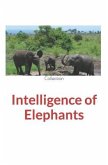Understanding the mysteries of our planet, Earth, requires enlightened scientific expertise and passion. To anticipate potential global variations and their impact on human civilization, it is crucial to deepen our understanding of the Earth system beyond its current state. This calls for comprehensive investigations of global processes, which necessitate the use of remote sensing. Remote sensing is defined as the scientific and artistic approach of gathering information about an object, area, or phenomenon by analyzing data acquired from a device not in direct contact with the subject under investigation (Lillesand et al., 2004). Since its inception a few decades ago, remote sensing has made remarkable progress and is now recognized as a powerful tool for accessing information from remote areas. Satellite remote sensors serve as the primary source of consistent and continuous data for studying the Earth's atmosphere, oceans, and land in both spatial and temporal dimensions. Esteemed organizations like NASA and ISRO employ innovative methods and advanced computer analysis tools to observe and comprehend the interconnected natural systems of our planet, thus ensuring its protection. Notably, the development of various geo-visualization platforms, such as NASA's World Wind, Google Earth, ArcGIS Explorer by ESRI, and Microsoft's Virtual Earth, has facilitated meaningful views and spatially referenced information about Earth. The applications of remote sensing are vast and extend to almost every realm of human activity. In meteorology, it enables the profiling of atmospheric temperature, measurement of water vapor, and determination of wind velocity. In oceanography, it aids in mapping sea surface temperature and ocean currents. Glaciology benefits from remote sensing by allowing the mapping of sea ice and ice sheets, as well as assessing navigability. The field of geology benefits from remote sensing through the identification of rock types and the location of geological faults and anomalies. Agriculture utilizes remote sensing to monitor vegetation extent and types, as well as to map soil types. Hydrology employs remote sensing to assess water resources and forecast meltwater run-off from snow. Additionally, remote sensing plays a crucial role in disaster control, providing early warnings for sand and dust storms, flooding, and monitoring pollution levels.







